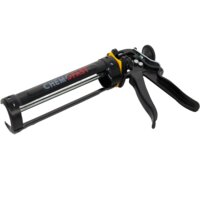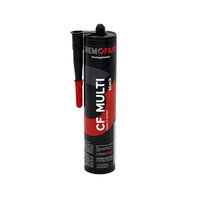
floor joints
Sealing floor joints
Sealing floor joints is a major challenge, especially in public and commercial areas. Expansion and compression movements, mechanical loads due to walking or cleaning and other stresses place high demands on the products and are elementary when selecting the sealant. It is also important to select a suitable sealant for floor joints in the case of elastic grouting. The biggest innovation in the field of sealants in recent years is the so-called MS polymer. Modern MS polymer products such as the CF MULTI have, among other things:
- high elasticity
- high resistance to weathering and UV radiation and can be
- painted with water-based paint systems and can be used both indoors and outdoors.
- be used both indoors and outdoors.
A MS polymer sealant can be used in a wide variety of applications and is not only convincing because of its low odor, but also, and above all, because of its good compatibility with the treated substrates. Another advantage is that if the cleaned substrate is load-bearing, clean, dry, and free of dust and grease, the sealant can be applied immediately without primer thanks to the integrated primer. It is advisable to mask the area around the joint during application to prevent the sealant from getting onto the surface of materials. After the joint has been smoothed and the specified curing time has been observed, MS Polymer sealants can be painted over with water-based paint systems.
The following steps should be performed for a perfect joint:
Step 1: Clean joint
Step 2: Tape the edges of the joint
Step 3: Prepare cartridge and cartridge press (silicone syringe)
Step 4: Insert cartridge into the cartridge press
Step 5 Draw joint
Step 6: Spray joint with water-rinsing agent solution
Step 7: Pull and smooth joint
Step 8: Wait for curing time and repaint joint if necessary







